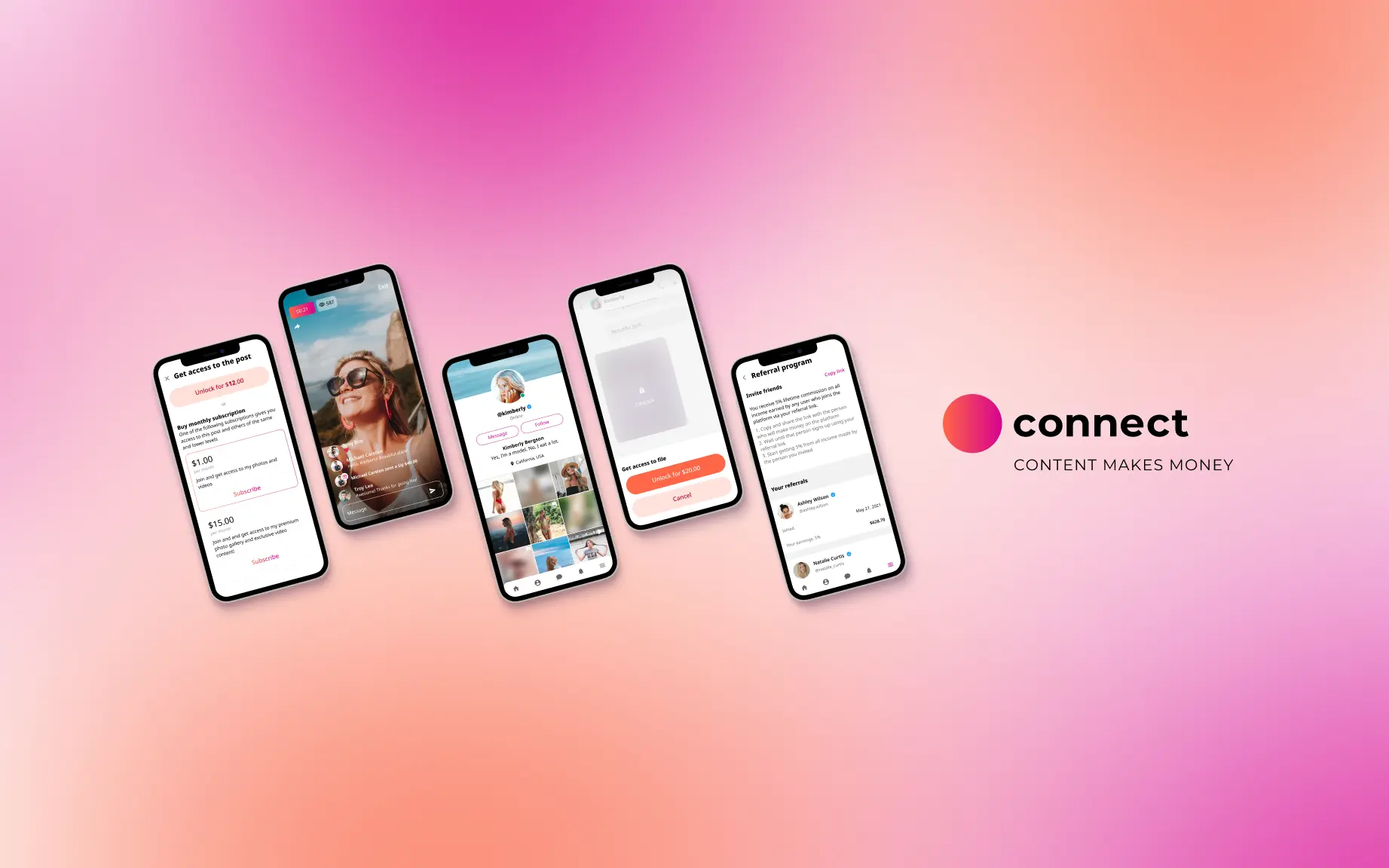Where to Sell Art Online in 2025? Best Marketplaces
Are you ready to monetize your creativity? Check out a complete list of the best platforms and the best apps to sell your art online in 2025.

Selling Art Online in 2025: A New Frontier for Artists
If you’re an artist wondering where to sell art online, you are not alone. The digital marketplace offers a whole new world for creators to promote and sell their work. For decades, artists have been limited to selling their work through an art gallery or via a local art show or exhibition. Now it is easy to sell virtually anything to an international marketplace, thanks to the internet and mobile devices.
Selecting the best platform to make a real impact and create consistent sales is important. Sometimes with so many different options, it can feel overwhelming. This is why the best apps to sell art have come to artists’ aid. They provide artists with a platform to easily upload works, manage sales, and interact with customers from your phone or computer.
The most exciting element about 2025 is how these platforms have evolved so generically to showcase all types of artists, from digital painting to traditional canvas prints and mixed media. With the easier interfaces and rad marketing tools, artists have the opportunity to get started easily even if they have never sold art online.
This article will cover some of the most applicable art platforms out there. We will share best practices to make sure you maximize your sales. Moreover, we will determine what sites or apps work best for your art and your business.
Understanding the Online Art Market Landscape in 2025

Before getting into specific platforms, it is helpful to have an understanding of where the online art market exists in that larger context today. There is massive change in the art industry happening fast, and 2025 marks a shift in the forefront of technology and creativity.
More buyers are shopping for art online than ever before, from collectors searching for originals to hobbyists searching for prints to hang on their wall. This means artists have the opportunity to reach a global audience like never before.
Technology has also facilitated this shift. We have never had so many platforms and best apps to sell art that are mobile-friendly and capable of reaching the whole world. As an artist, you no longer need a studio or a gallery representative to show your work. You just need your imagination and reliable and accessible internet.
How to Sell Your Art Online?
It’s true that with so many options, choosing where to sell paintings online or digital art can feel like navigating a maze. Different tools, different fee structures, different types of audiences. Some websites are for people who want to buy premium fine art, while others have people looking to buy more general art or even buyers looking for paintings that they will print themselves.
This is why it is important to understand your own intentions, as an artist, before you start allowing someone else to market your art and sell it for you. Are you looking to create a personal brand as an artist? Do you want to test different market types? Do you want a simple, turnkey solution to sell your art online quickly and take up your own time and effort?
With some knowledge around how the internet works and an understanding of what each platform could potentially offer you, you are far more prepared to select the best place to launch your online art business.
Exploring Popular Art-Selling Platforms: Features and Benefits

Where you choose to sell art online matters, and understanding the available options for selling art online can help you find a good fit. Every platform offers essential features designed to help artists at different stages in their art careers. Below, we have looked at some common platforms in terms of what is unique about them.
Marketplace vs. Personal Storefront
Examples of marketplace platforms include Etsy, Saatchi Art, and Artfinder, which act as marketplaces where your client can see art by many different artists. The advantage to these platforms is increased visibility because the buyer comes there specifically looking for art. However, many other creators also rely on that shared space, so competition will be high.
Platforms like Shopify and Big Cartel will allow you to build your own personal storefront. You have more control over the branding, and the shopping experience will be more customized for the client. On the other hand, you will have to attract your own traffic, and that will take marketing effort.
Print-on-Demand Services
Print-on-demand services like Fine Art America, Redbubble, and Society6 allow you to sell your artwork as a large variety of different products without worrying about packaging and shipping the products and consuming your inventory. This kind of business model lowers your up-front costs and allows you to open up new revenue streams.
Curated Galleries for Premium Art
If you create high-end paintings or sculptures, curated platforms like UGallery or Artfinder can connect you to serious collectors. These platforms vet their artists to ensure the quality of the artwork they sell and often provide concierge services for shipping and customer service.
Community Platforms
If you’re a digital artist or illustrator, there are platforms like DeviantArt that offer community for interacting and even connecting with fans who may want to purchase your products, for example, but not limited to, sales. The connection with fans can help create loyalty and increase sales as they begin to follow you over time. The social aspect can help dramatically with building your brand.
Fees or Commissions
Pay attention to how the platforms make money. Some have monthly fees, some take a cut of every sale, and some do both. If you understand how the platform works, you will be in a better position to select the platform that makes sense for your budget and profit goals.
Looking at these websites to sell your art can feel like a lot, but when you understand what they do, you can make informed decisions. The next section will give you a perspective on how to market your art so when you use those platforms, you get the most bang for your buck.
12 Platforms for Artists to Sell Their Artwork Online in 2025
Finding the right art-selling platforms can make all the difference when it comes to achieving success. Each platform has a unique ‘feel,’ audience, and tools, so it is wise to use several platforms before committing. We have gathered 12 of the best platforms that artists love in 2025.
1. Shopify: Create Your Online Art Shop
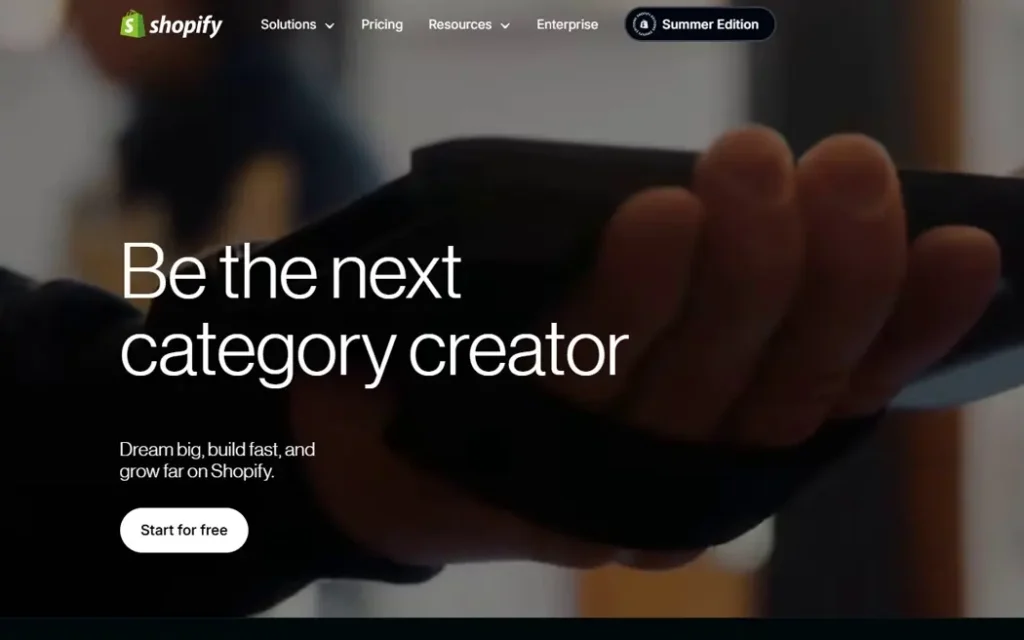
If you want control over your brand and sales, Shopify can be a powerful way to go. It allows you to create a store however you want, with your own domain name and branding. Shopify is a great fit for artists who want to build a business outside of just a marketplace.
If you want control over your brand and sales, Shopify can be a powerful way to go. It allows you to create a store however you want, with your own domain name and branding. Shopify is a great fit for artists who want to build a business outside of just a marketplace.
2. Etsy: A Large Marketplace for Unique and Handmade Art Items
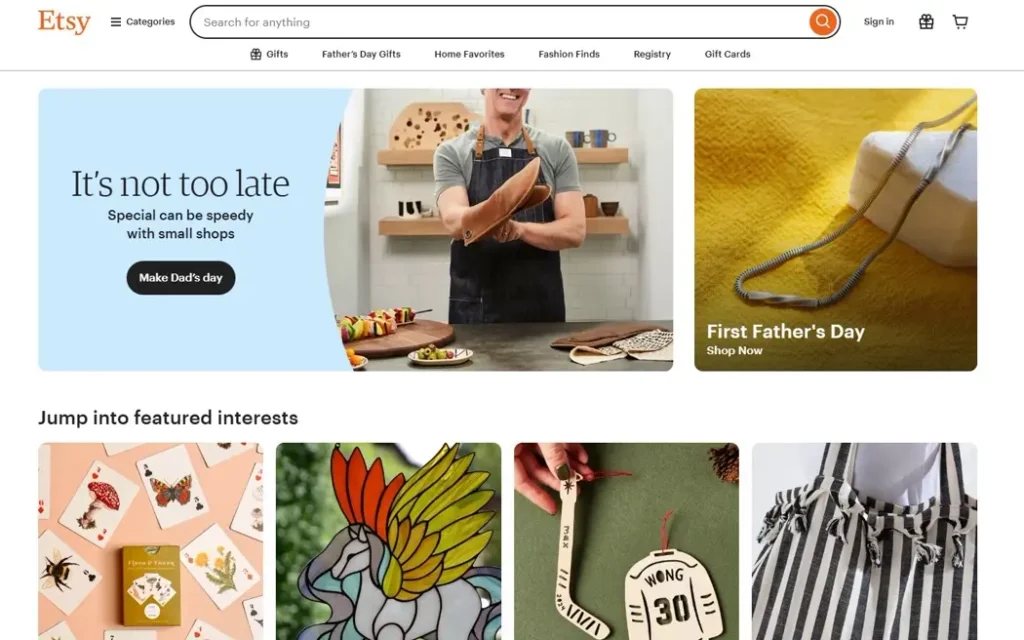
It is still a popular site for artists selling original paintings, prints, and crafts. There is a larger audience to get discovered, especially if your style is in the handmade or indie realm.
3. Saatchi Art: An all-about-fine-art gallery platform
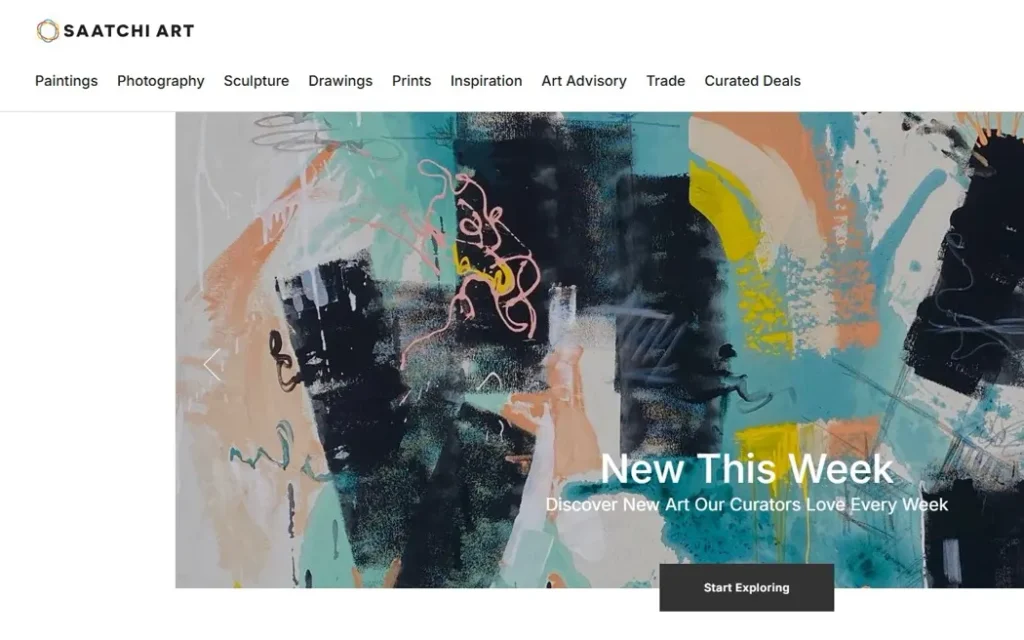
This platform focuses on original paintings and fine art items. Saatchi Art is good if you want to be discovered by collectors (on a serious level) and you cannot be bothered with shipping or customer service. Saatchi will handle this for you.
4. Fine Art America: Print-on-Demand & Other Products
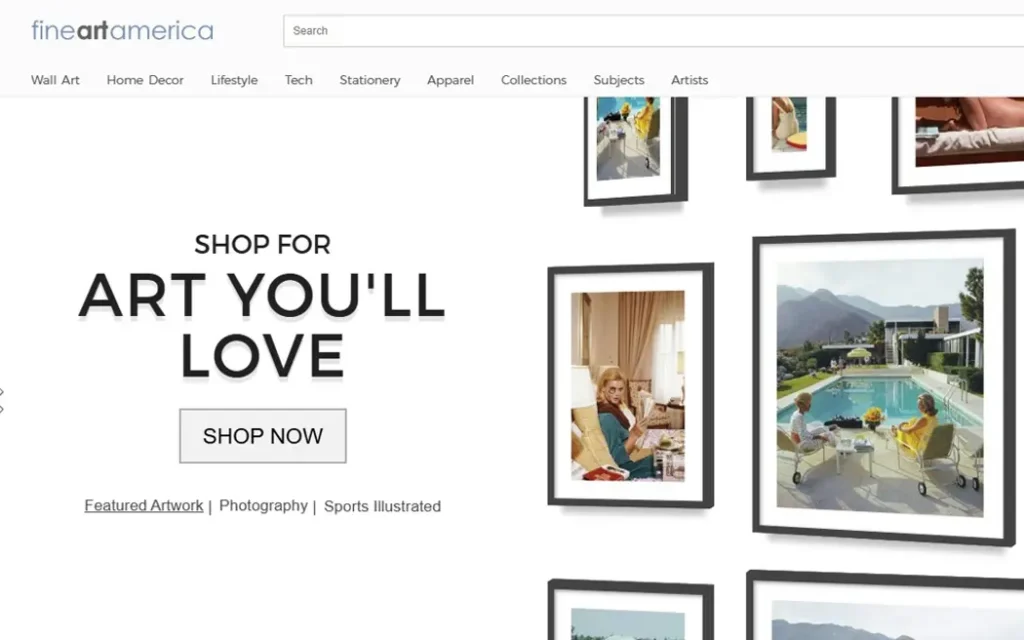
If you are looking to diversify your income, Fine Art America offers print-on-demand services to convert your paintings into wall art, apparel, and more. They make it fun to sell paintings below original prints.
5. Redbubble: Best Apps to Sell Art on Merchandise
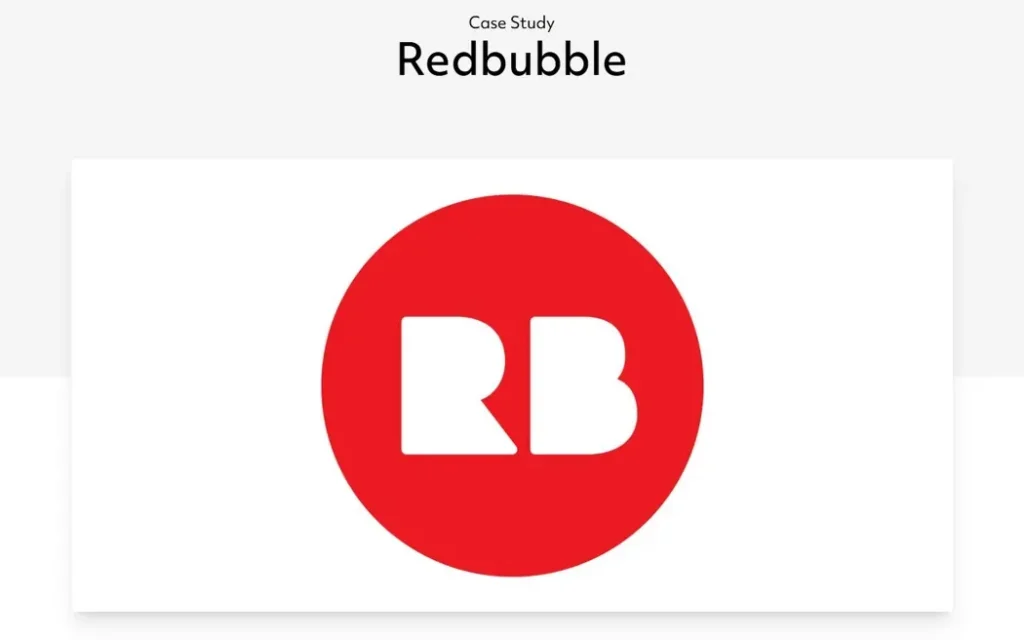
It gives room to put art on everything: t-shirts, phone cases and beyond. As Redbubble has an app-based platform, designs can be uploaded wherever you are and managed in one place.
6. Society6: Sell Art on a Variety of Products
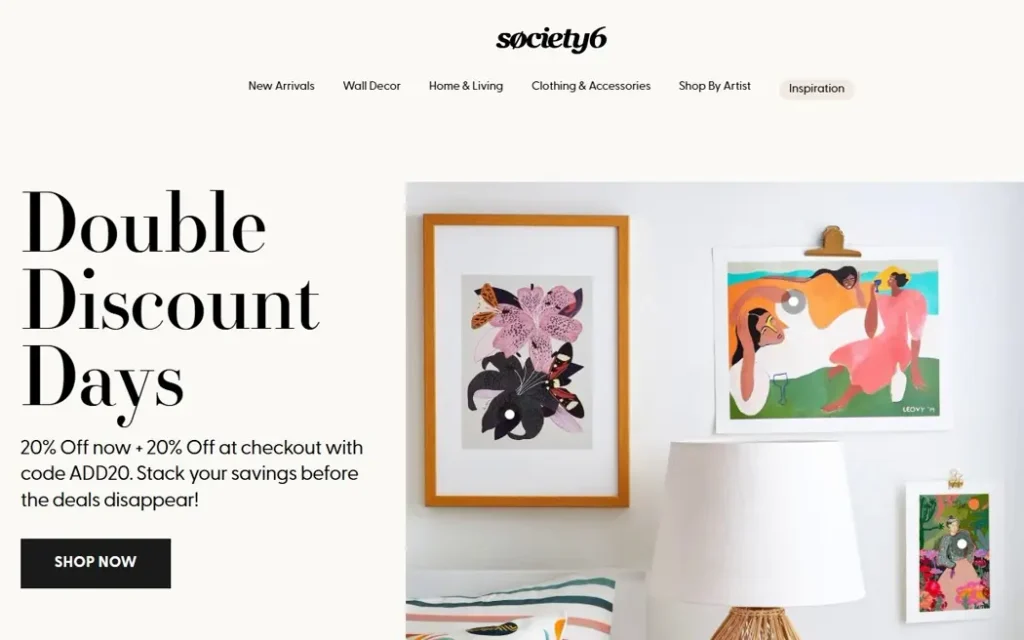
Like Redbubble, Society6 gives artists a chance to make money on different products, and they take care of the production and shipping.
7. Big Cartel: Simple Storefront for Indie Artists
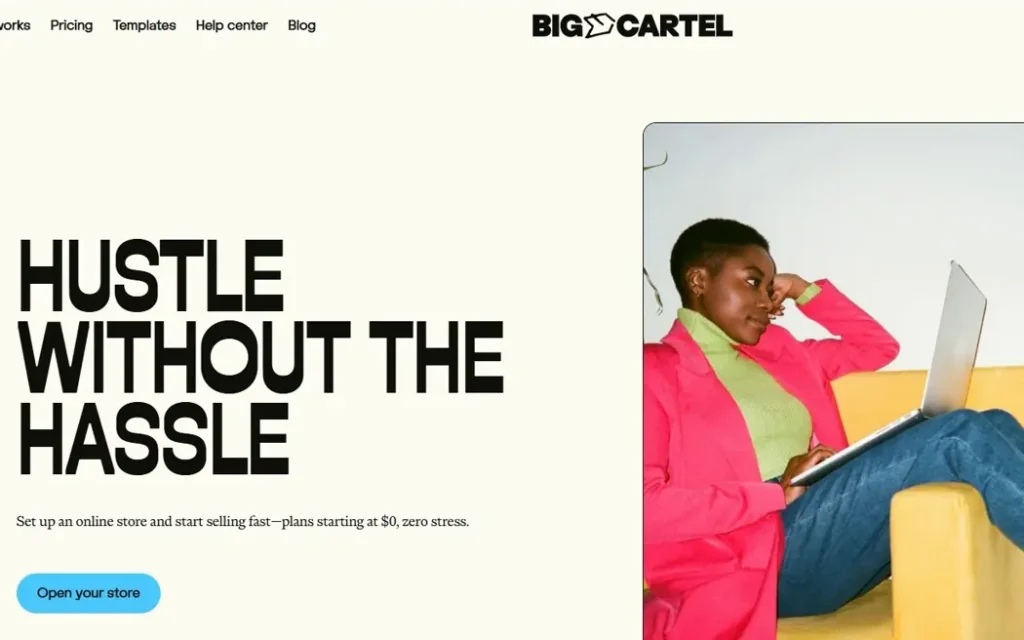
It is a no-fuss platform specially designed for independent artists who want the simplest and most affordable route of selling their art (with no listing fees).
8. Artfinder: Curated Marketplace for Originals
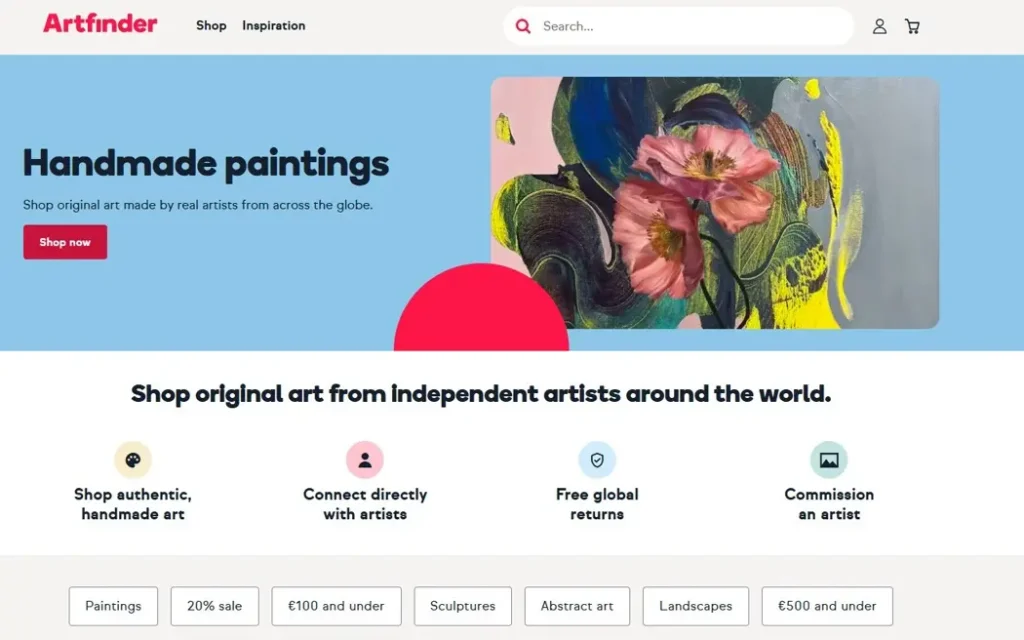
It is one of the few marketplaces dedicated to original art, making it the perfect space for painters and sculptors who want to reach customers interested in uncommon and one-of-a-kind art.
9. UGallery: Curated Platform and Gallery
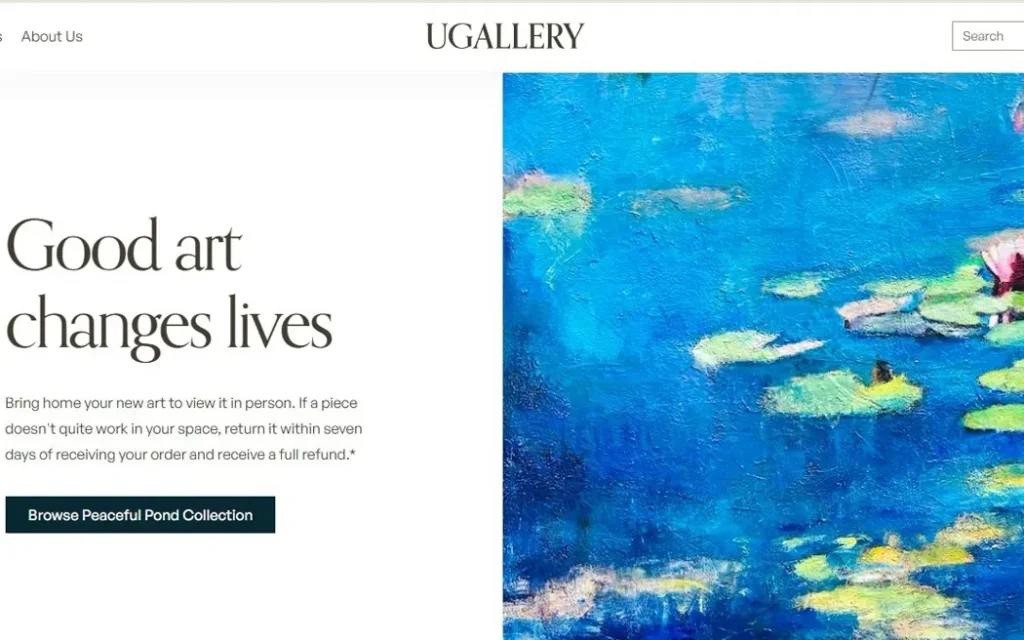
It is a curated platform that also emphasizes personal customer service. UGallery is a great option for artists who want a boutique-style gallery to showcase their work.
10. Zazzle: Your Art on Custom Products

It allows customers to customize their product, tweaking your art/graphics before purchasing.
11. DeviantArt: Social Network and Sales Platform for Digital Artists
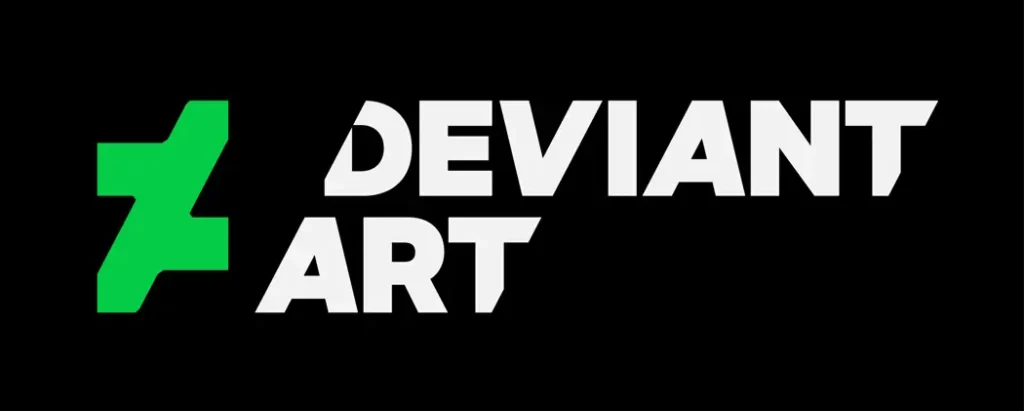
This platform combines a social network with an art sales site, making it suitable for digital creators who want to build a following (fan base).
12. ArtPal: Free Art Selling Platform
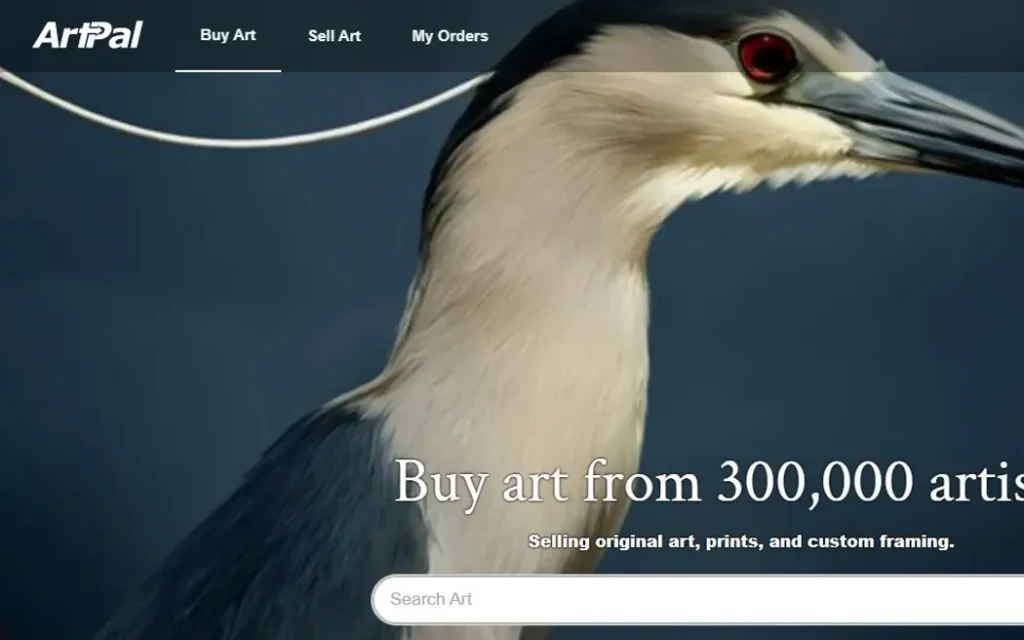
It allows you to list original artwork plus original prints and sell them at no cost to you. ArtPal is a great way to test the market with no upfront costs.
12 Art-Selling Platforms for Artists: A Summary
| Platform | Key Features | Fees & Pricing | Best For |
| Shopify | Entirely customizable online store with own brand and domain | Monthly subscription + transaction fees | Artists who want to retain full control and develop their brand for the long run. |
| Etsy | Large marketplace for handmade and unique art | Listing fees + transaction fees | Selling originals, paintings, prints & crafts that are quirky and indie style |
| Saatchi Art | Gallery-style platform that takes care of shipping and customer service | 35% commission on sales | Fine art and serious collectors |
| Fine Art America | Print-on-demand services such as wall art, apparel, and merchandise | Free to join, premium plans available | Diversifying income with prints and merchandise |
| Redbubble | App-based platform where you can print on demand on various products | Artist sets markup on base price | Selling art on merchandise using mobile apps |
| Society6 | Print-on-demand on diverse products, manages production and shipping | Fixed artist royalty | Monetizing art on prints and home décor |
| Big Cartel | Simple, affordable storefront with no listing fees | Monthly subscription plans | Indie artists wanting a straightforward store |
| Artfinder | Curated marketplace emphasizing original art | 33% commission | Painters and sculptors selling unique originals |
| UGallery | Curated online gallery with personal customer service | 50% commission | Artists seeking boutique, curated sales experience |
| Zazzle | Customizable products allowing customer tweaks | Artists set royalty rates | Artists selling digital art on customizable products |
| DeviantArt | Social networking combined with art sales | Free to join, commissions on sales | Digital artists building fan base |
| ArtPal | Free to list original artwork and prints | No upfront fees, commission on sales | Testing the market without fees |
To sum up, these platforms each have their own advantage, so your selection depends on your style, demographic, and sales goals.
How to Choose the Best Apps to Sell Art?
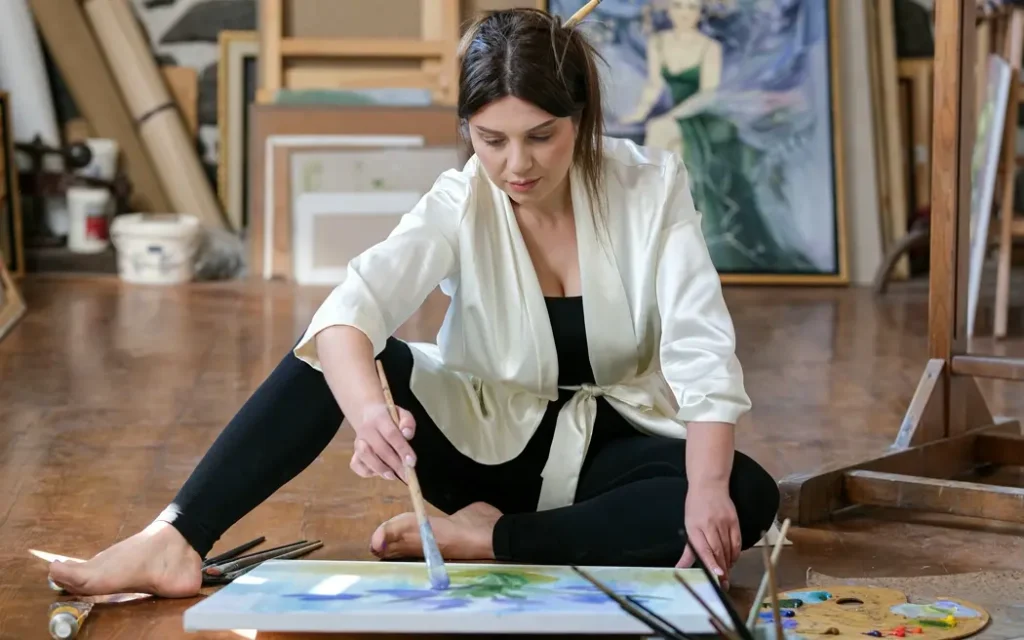
With all the best apps to sell art out there, it’s easy to feel a bit lost. But not every platform is meant for every artist. Picking where to sell your art online comes down to a couple of things that will determine how well you do and how satisfied you are as an artist.
Know Your Art and Your Audience
First, think about the type of art you create. Are you a painter, digital artist, or printmaker? Different platforms cater toward different areas of art. For example, if you sell paintings, platforms like Saatchi Art or UGallery might be a better fit, while Redbubble or Society6 might be better if you’re a digital artist or your work is print on demand.
Also, think about the audience you’re targeting. Do you want to sell to serious collectors or casual everyday buyers? Knowing your audience will help you determine which platforms have the ideal customer base for your style and price.
Fees and Pricing Structure
The platforms will have different fee structures; some take commission on sales, while others will only charge listing fees, and some an upfront monthly fee. You want to go into the process understanding the fees that you will be responsible for upfront so you’re not caught off-guard. For example, Etsy charges the seller a small listing fee plus a transaction fee, and Shopify charges the seller an upfront monthly fee. However, it allows the artist total control over pricing and branding.
Ease of Use and Tools
How easy is it to use? Are there tools for marketing, inventory tracking, or client communication? The best apps to sell art often have integrated tools for functions like social media sharing or comprehensive analytics to help you gain sales and build your presence.
Shipping and Fulfillment
Think about how you will manage shipping. Some applications, like Saatchi Art, will unpack, pack, label, and ship on your behalf, helping you avoid errors and labor. Some applications allow you to ship your item, which may work for your intended shipping purpose if you would like autonomous control.
Community and Exposure
Some functions, like community or social functions, can be considered when choosing a platform. Some platforms, like DeviantArt, have community features that accompany sales. Selling works on DeviantArt allows artists to build and see a fan base evolve as they sell where they are able to identify with them on multiple levels.
Picking the right app or platform isn’t just about where you go to sell art online—it’s about picking the platform that fits your needs as an artist and your business goals. So, don’t be afraid to try out numerous platforms until you find the right match for you.
Boost Your Art Sales in 2025: Tips for Success on Online Platforms
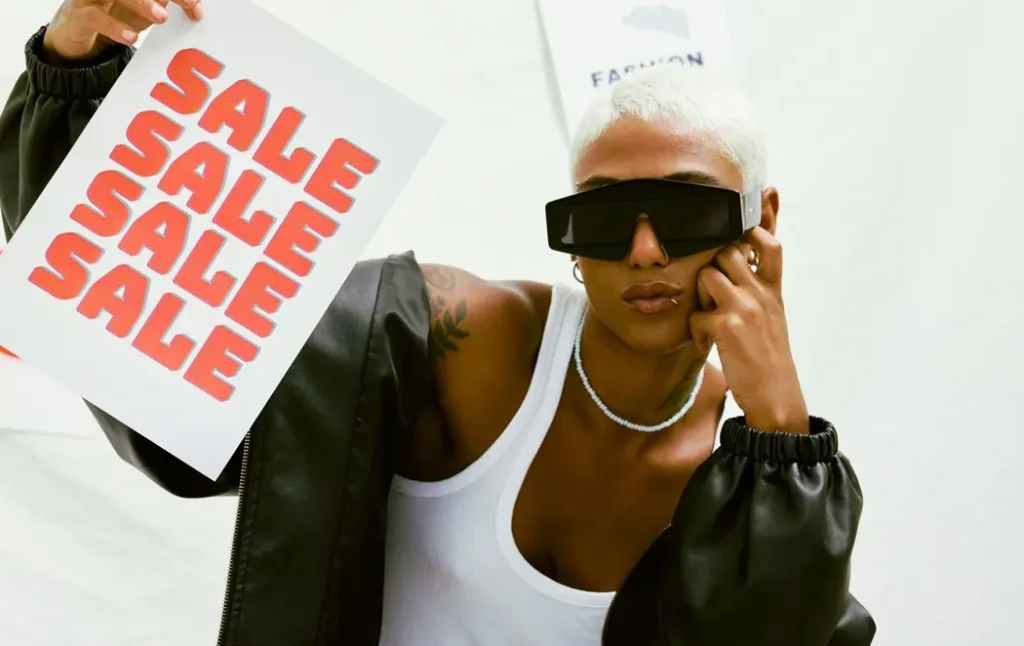
Knowing where to sell art online is just the first step. To actually increase your sales and gain traction on the platform you’ve chosen, you must be deliberate, engaged, and authentic.
Create a Strong Online Presence
Your online identity and persona are your “brand” ambassador. Ensure your social media, website, and profiles on platforms share a similar story. Imagine the story you want to tell as an artist using all channels. Start with the beginning stages of your journey and share the ups and downs as well as inspirations; show the various ways you create, including the trials and triumphs.
Use SEO and Keywords
Use “sell paintings,” “where to sell paintings online,” and “best apps to sell art” organically in your product titles and descriptions. This will help potential buyers find you in a search engine or while browsing in the platform.
Engage With Your Audience
Respond promptly to questions and comments, and thank the buyer in a personal way. Engaging means that you’re building trust, and you will earn loyal customers who will return to buy and refer others.
Try Limited Editions or Exclusives
Limited or exclusive editions might create scarcity and, consequently, increase urgency to buy and perceived value. Imagine you are creating signed prints and/or special commissions using one of the many platforms where you can do this.
Collaborate and Network
Collaborating with other artists and influencers can help introduce you to new audiences. Try to look out for opportunities to participate in online art fairs, contests, or with other artists to amplify your work’s message and present your work to new audiences.
Update Your Skills
Finding opportunities to learn and develop skills—and trying new styles—can make your work appeal to a larger audience and keep your practice moving and fresh.
With these strategies, you’ll turn casual browsers into loyal collectors and make the most out of the best websites to sell your art in 2025.
Sell Paintings With Scrile Connect: A Unique Platform for Artists
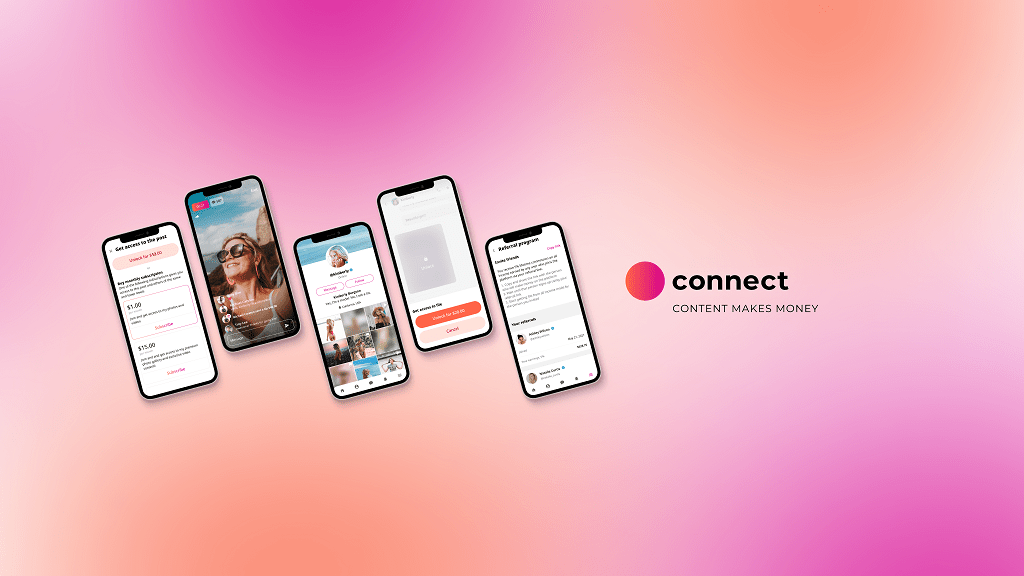
If you’re wondering where to sell art online and want a solution that offers flexibility and control, Scrile Connect might just be what you need. In contrast to conventional marketplaces, Scrile Connect provides artists a full-service platform to create a unique, branded online environment to sell artwork.
What is Scrile Connect?

Scrile Connect is a completely customizable social network platform for creators and artists such as painters, sketch and illustration artists, digital artists, and more. This platform allows you to create your own community to sell paintings, run subscriptions, and sell and organize live engagements, all while building a community of fans.
How Can Scrile Connect Increase Your Art Sales?
When you own your platform and can sell and showcase your work online without giving high commissions to a third party, you have direct access to your buyers and build a community of loyal followers. Having your own platform helps tremendously when it comes to selling your work. If you are serious about growing your art business and want more than a listing in a marketplace, Scrile Connect is a good tool to consider.
FAQ: Sell Your Art Online
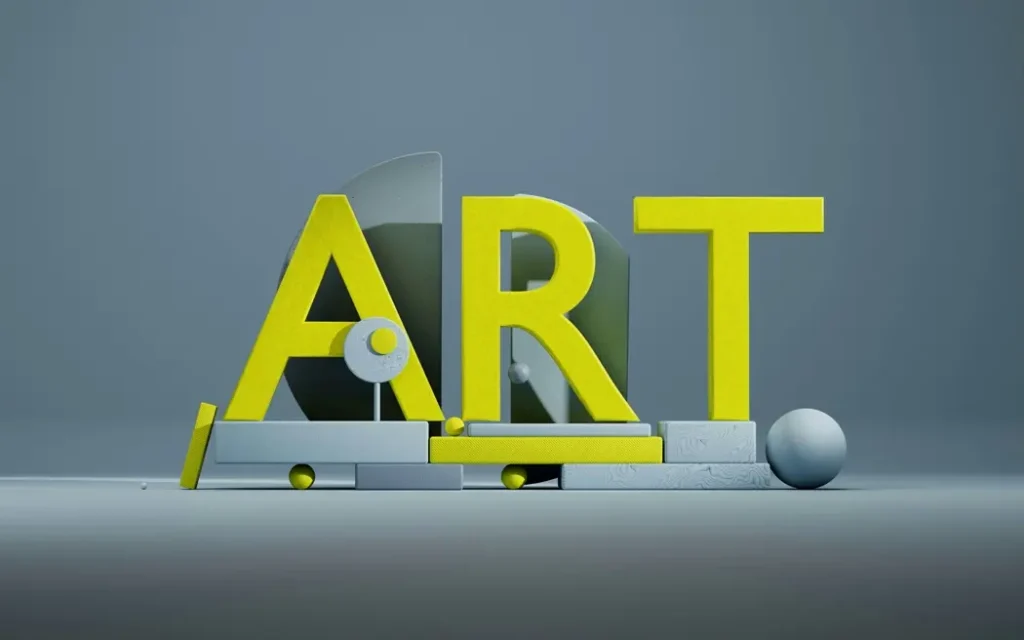
What is the best website to sell artwork?
Choosing the right website to sell your artwork really comes down to your “reason for selling” and how you want to interact with buyers. If you are looking for the most immediate sales and direct communication, utilizing platforms like Facebook Marketplace, Instagram, and even eBay can be quite useful because you are able to engage with your audience on a personal level. For artists that prefer the more curated, audience-driven experience of an online community, Etsy and Artfinder are good marketplaces to expose your art to buyers or collectors of original art.
Is it worth selling art on Etsy?
Absolutely, if you’re an artist looking to reach a huge community of engaged handmade and unique piece buyers, then selling your art on Etsy is certainly worth it. Etsy has an engaged base of buyers, which allows artists to gain exposure and start to develop a following. It has a number of tools that are set up to get you promoted and selling your art. While there may be a lot of competition on Etsy, if you plan accordingly, you can be successful there.
What website do most artists use?
Many creatives favor website builders that focus on a pleasing appearance and the capability to do commerce. Squarespace has beautiful templates with built-in blogging as well for posting your story and art you wish to share. Others that are sometimes favored are Alameda and Utica—they have nice, well-designed, easy-to-use, and integrated commerce. Jasper is another one that is clean and minimal but still nice for a creative who wants a very simple and uncluttered site.
Conclusion: Where to Sell Art Online
Choosing where to sell art online can be an exciting yet tough endeavor. When considering your options, whether you’re just beginning or wanting to grow further, a good portion of your success can depend on where you sell based on platforms and tools. There is a marketplace out there for each of you, whether you’re using a market leader like Saatchi Art or Etsy or an innovative solution like Scrile Connect.
Selling art involves so much more than simply posting your work. It’s about connecting with people, telling your story, and engaging with your audience. The best apps to sell art and art-selling platforms provide much more than just a sales channel. They provide a community and opportunity.
If you want full control over how your work is sold and a customizable platform to truly sell your art online, you can create your own site with Scrile Connect. It’s a modern, flexible platform designed to let artists and entrepreneurs take control of their own business.
Read also
| Article | Why it’s worth reading |
|---|---|
| Where to Sell Music Online in 2025: Top Picks | If you create music, this guide helps you compare platforms, royalties, and fan relationships so you don’t just upload tracks blindly and hope for the best. |
| How to Sell Music Online in 2025: Proven Tips | Once you’ve chosen platforms, this article focuses on strategy: pricing, release plans, bundles, and simple promo tactics that actually move your tracks. |
| The Best Place to Sell AI Art in 2025 | When you work specifically with AI art, this guide explains which sites are more friendly to AI creators, how they handle rights, and where buyers are actually active. |
| Where Can I Sell My AI Generated Art? | This article helps you build a practical roadmap: how to position AI art, which formats to offer (prints, packs, licenses), and how to avoid the “race to the bottom” on price. |
